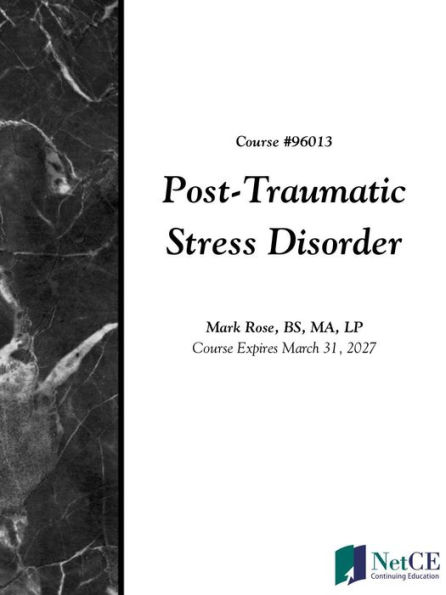The purpose of this course is to provide primary care providers with the knowledge they need to effectively identify, engage, diagnose and treat patients with PTSD. In addition, members of the public may use this course to enhance their personal knowledge of the subject matter presented.
Upon completion of this course, you should be able to:
1. Review the historical conceptualization of trauma reactions and post-traumatic stress disorder (PTSD).
2. Analyze the models traditionally used to explain the PTSD disease process and to develop treatment modalities.
3. Define terms related to trauma and stress reactions.
4. Outline the epidemiology of PTSD and related comorbidities in various populations.
5. Review the natural history of PTSD.
6. Describe the personal and societal costs of PTSD.
7. Recognize common presentation and associated comorbid conditions in combat veterans following exposure to trauma.
8. Identify the possible presentations and unique provider considerations involved in the treatment of patients with PTSD following sexual assault.
9. Discuss the impact of minority sexual orientation on the risk for PTSD.
10. Outline the epidemiology and presentation of PTSD following natural disaster or acts of terrorism.
11. Review considerations when assessing and treating PTSD in first responders and trauma care personnel.
12. Describe issues that may arise in persons who develop PTSD in response to injury and/or torture.
13. Analyze the relationship between PTSD and violence and aggression in various populations.
14. Discuss the pathophysiology of PTSD.
15. Evaluate appropriate approaches to assessment and intervention in the immediate post-trauma period.
16. Outline the appropriate assessment and management of patients in the intermediate post-trauma period.
17. Describe the approach to assessment, screening, and diagnosis in the extended post-trauma period, including racial and/or cultural considerations.
18. Identify general management considerations when establishing a treatment plan for persons with PTSD.
19. Evaluate the possible psychotherapeutic interventions for PTSD.
20. Describe the optimal approach to the treatment of complex trauma.
21. Compare and contrast pharmacotherapies and complementary/alternative approaches used in the treatment of PTSD.
22. Discuss key points in the treatment of specific PTSD symptoms and comorbidities.
This 15-hour continuing education course is available for download for professional development; if continuing education credit is desired, please see instructions included in eBook.



